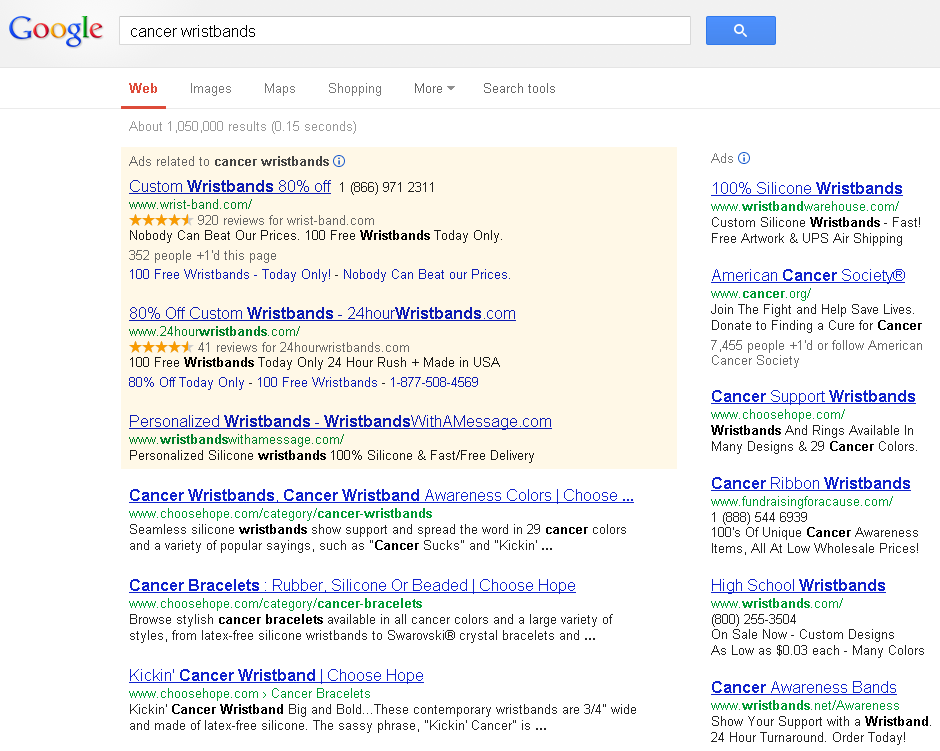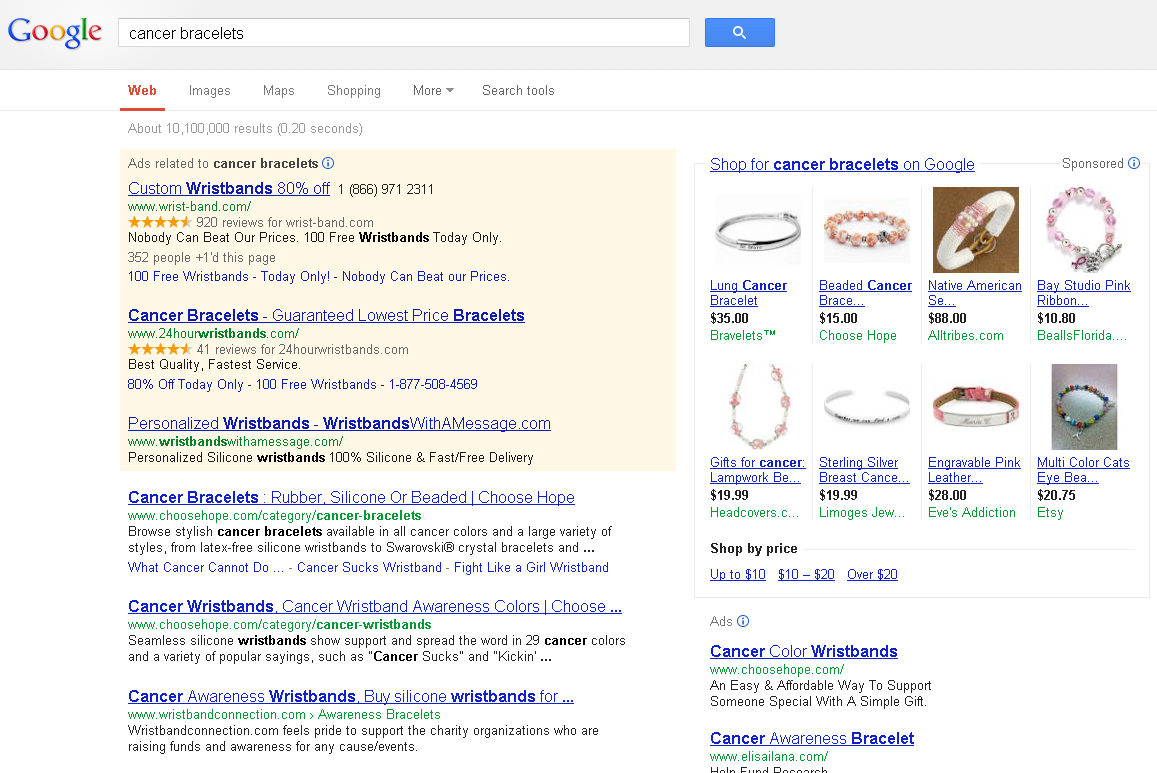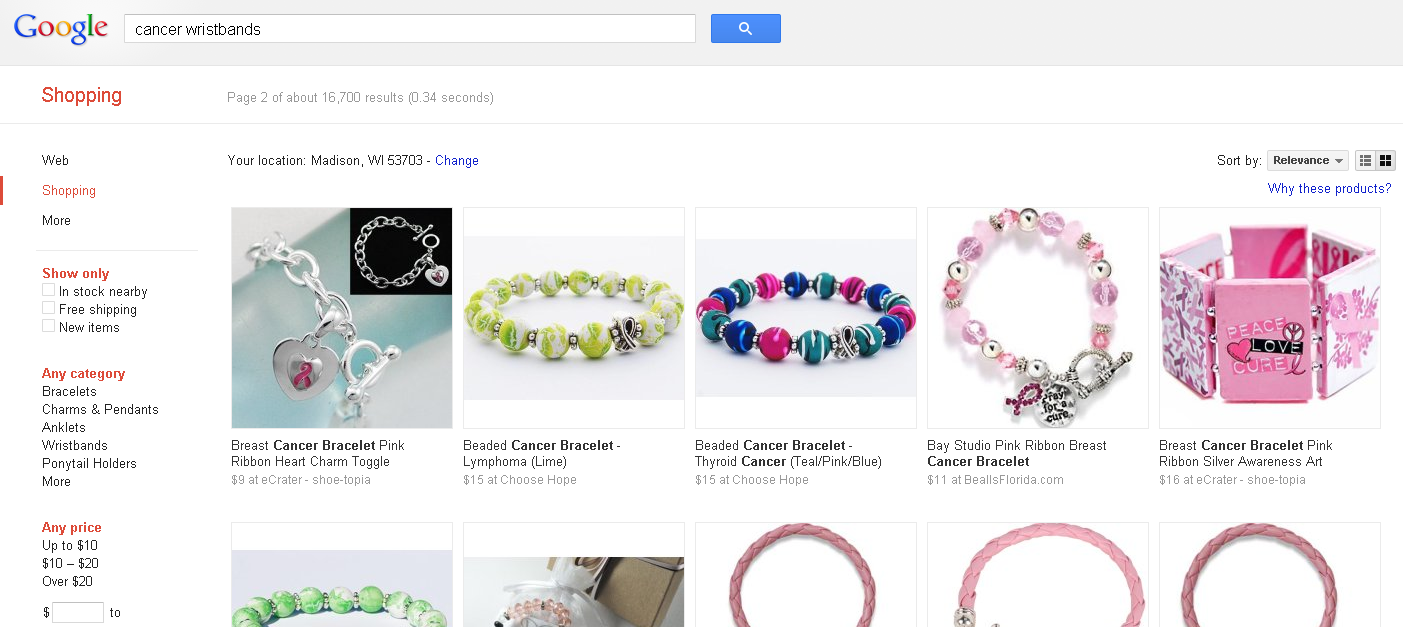
Google Shopping Product Listing Ads for 2013
Since officially going live on October 17, 2012, Google Shopping paid product listing ads have been a search engine marketing revenue generating juggernaut. Businesses that sell products online and acquire a majority of their online revenue from Google Search channels have to invest in Google Shopping if they want to meet or exceed last year’s revenue numbers.
Why should you use Google Shopping? Unless your business is Amazon (which let’s face it, you’re not Amazon), you’ve been receiving a majority of your search engine revenue from two, maybe three, Google Search channels via targeted search query keyword(s).
- Google Organic (Natural) Search: CPC is free; SEO time is not free
- Google SEM (Paid) Search: Text Ad CPC
- Renamed to Google Shopping: Image Ad CPC (Optional: Promo Banner)
Those businesses that chose to not invest time and money into Google Shopping PLAs this previous United States fall holiday shopping season likely saw a decrease in month over month total online revenue. After additional investigation, those businesses likely will notice a decrease in monthly organic revenue numbers starting in October of 2012 and maybe as far back as August. Management is now reacting and it’s time to start being proactive.
Major Google Search Engine Results Shift Has Occurred
Have you ever heard someone say, “a picture is worth a thousand words?” I feel that statement best suits the psychological effect Google Shopping has on a searcher or would-be customer. Our eyes are naturally drawn to what is unique, relevant and reinforces our action trust signal. Marketers in 2007 that experienced the shift in search results when Universal Search was implemented know exactly the importance of a page one call-to-action (CTA) image on traffic and conversion.
Google Shopping PLA’s using a paid pricing model to consistently display relevant search query product images has taken us into the twenty-first century of search results. Google is now close to mirroring the buying cycle of a brick and mortar store. How so? Let’s use a retail store to find a particular book, for example:
- You first arrive at your destination (Google)
- You navigate to the particular “book” section in the store (Google:Web – Search Query)
- via the images of book covers (Google SERPs: Google Shopping)
- not via the product name, but maybe via the price tag (Google SERPs: Organic)
- You grab the book to acquire more information and confirm your purchase signal(s) (Click Google Shopping PLA to potentially purchase)
- You complete the checkout process (eCommerce Store)
Google Shopping Feed Best Practices: Maximizing Revenue via Search Queries
As more businesses, including your competitors, continue to become more informed and involved with Google Shopping, you can expect (and project) cost from Google to increase in 2013. Obtaining a consistent monthly return on your Google Shopping investment will be top priority for SEM specialists. Looking ahead to the 2013 fall holiday shopping season, I bet a majority of us can agree that a $.02 CPC is less likely to achieve a page one position for a majority of search queries. To identify a course of action for this prediction, we need to find the sweet spot of PLA Ad Group conversion ROI before the holiday shopping season arrives. If you increase or decrease your PLA Ad Group CPC bid by $.15, how will that impact monthly conversion revenue to profit margin?
During this process, I found something very interesting while maximizing monthly revenue for one of our AcumiumEngage client’s (Choose Hope) Google AdWords: Shopping account.
This all started when doing a Google search for (cancer wristbands). We noticed a couple of PLA results and one of those was Choose Hope. Normally this would be exactly what we’d want, but the product listed for (cancer wristbands) was a cancer bracelet product. I can see how these products can be viewed to be very similar, but based on the following information, I don’t believe that should be the case from Google’s perspective:
Correct categorization in the Google Merchant Center product feed taxonomy.
- Cancer Wristband Products: product_type=Apparel & Accessories > Clothing Accessories > Wristbands
- Cancer Bracelet Products: product_type=Apparel & Accessories > Jewelry > Bracelets
Created two PLA Ad Groups with relevant Auto Targets Product Type
- Cancer Wristband Products: Cancer Wristbands (PLA)
- Cancer Bracelet Products: Cancer Jewelry Bracelets (PLA)
Utilized negative keywords at Ad Group level for Cancer Jewelry Bracelets (PLA)
- -Wristbands
- -wristband
Note: The keyword (wristbands) was nowhere to be found in the title of the displayed bracelet product.
Since then, I’ve been in communication with Google AdWords support and notified them of my concern as to why a less relevant search query Google Shopping product is displayed when, to my knowledge, I did everything correctly to have the most relevant product displayed (wristband vs. bracelet). During this communication, Google provided me with some current best practices to review and confirm are in place.

As of February 25, 2013, a search query in Google Search: Web for (cancer wristbands) displays no Google Shopping results. Being this search query is ideal for displaying Google Shopping results on page one leaves me to believe Google may or may not be in the works of analyzing/modifying how the most optimal product can be displayed. Or maybe I’m just getting ahead of myself and it’s something on my end?
Feel free to test some of the following similar search queries for yourself and see how Google PLAs are displayed.
Google Web Search Query: cancer bracelets

Google Web Search Query (Suggested): cancer wristbands colors

Google Shopping Search Query: cancer wristbands

Google may teach you something new or may help support your theory(s) behind what really makes Google Shopping tick to marketers. The following are key points that we all should be aware of, but not limited to, in moving forward with Google Shopping.
- That’s it? From the data I’ve seen there has to be more unknowns.
- Well neither can I completely, so who or what’s controlling the result?
I’ve completed all support feedback objectives and still no luck at this point.
Google AdWords: Google Shopping Possible Display Factors
There are many things that could be affecting the display of Google Shopping ads. For starters, following Google’s policies and guidelines is necessary.
We also know that the search query is directly tied to the product title. This is very similar to the SEO organic ranking factor being tied to the landing page title tag.
In addition, competition from your competitors is likely to increase over time, and therefore, may affect the display of your ads as time goes on. Display may also be affected by submitting your Merchant Center feed once a day and utilizing targeted search query keywords in the product feed description. Of course there are many Google algorithm unknowns, unless you are so lucky as to have Matt Cutts on speed dial.
Have a comment or suggestion as to Google Shopping possible display factors? I’d like to hear from you. Please comment below or send me an email.